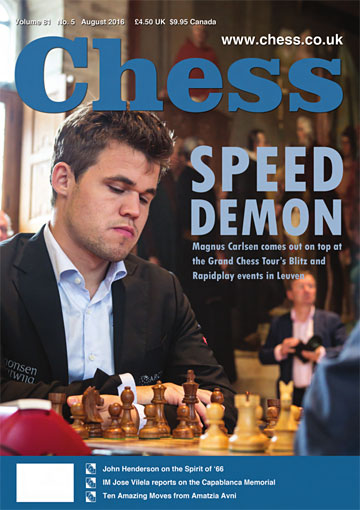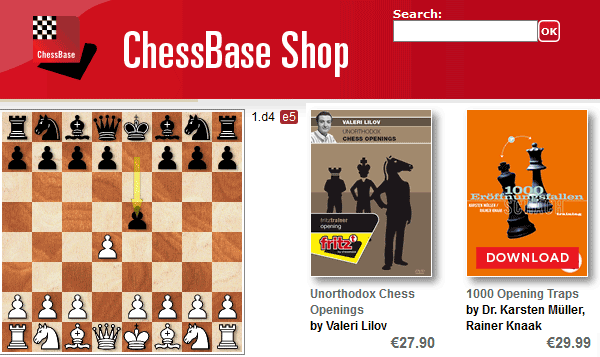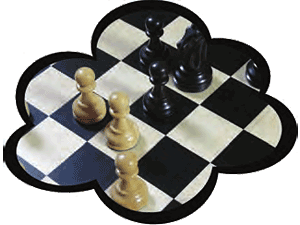Pondering some unusual first moves and their implications

A good friend of mine, FM Mark Ong Chong Ghee, pulled off this stunt two decades ago at the Singapore Cairnhill Open event against a fellow national player, who immediately exclaimed, “What nonsense is this?” before choosing to reply with a King’s Indian set-up, which I think is a good response to the pawn punt. This didn’t stop Black from getting crushed in 26 moves.
Mark noted that such moves are akin to saying, “I can play any garbage and beat you”, clearly showing no respect for the opponent. However, he had his rationale for doing so. A few years prior to that game, his opponent had played 1 c3 against him in a school event and behaved condescendingly after winning. So it was sweet ironic revenge for the Singaporean FM to win with 1 a3. However, he also had another, more prosaic reason for his opening choice. He remarked that, “At the time, I was getting better results with Black than White for some reason, so I moved 1 a3 to ‘play Black’”.
Another incident involving a sub-optimal opening choice I remember was when a local politician was gracing an opening ceremony and was invited to make the first move on top board for IM Hsu Li Yang. The Member of Parliament decided on 1 d3 (which is not too bad, in any case), and although Li Yang could have taken back the move after the picture taking and applause formalities, he decided to let the move stand and still made short work of his opponent.
Now, before you start to think, “What a load of tosh” with regards to this article, consider that Gawain Jones played 1 a3 in a 4NCL Rapidplay event in 2013 and Simon Williams 1 a4 two years ago – versus, not surprisingly, lower-rated opposition. Andrew Greet went one better by playing 1 h3 and 2 a3 at the 2013 World Mind Sports Games and winning rather handily. Williams probably topped that feat by going 1 f3 and 2 Kf2 in the 1999 British Championship, though he did it to win a wager. Let’s not forget either the one and only Michael Basman who beat Jim Plaskett with 1 h3 (and not surprisingly, the space-Grobbing g2-g4 showed up soon enough) at the 1991 British.
Before you get mad at your opponent for punting such a move as 1 h3, consider that White is at worst giving up his initial extra move and if he starts to play properly after that, then a fight is still on. Ironically, it might be even possible for White to turn a ‘pass’ like 1 h3 or 1 a4 into a useful move in particular opening lines. If you don’t believe me, read on.
Surfing through playchess.com’s selection of live games a few days ago, the following game between two near-2500s caught my eye.
| 1.e4 | 1,185,008 | 54% | 2421 | --- |
| 1.d4 | 959,510 | 55% | 2434 | --- |
| 1.Nf3 | 286,503 | 56% | 2441 | --- |
| 1.c4 | 184,834 | 56% | 2442 | --- |
| 1.g3 | 19,892 | 56% | 2427 | --- |
| 1.b3 | 14,600 | 54% | 2428 | --- |
| 1.f4 | 5,954 | 48% | 2377 | --- |
| 1.Nc3 | 3,911 | 50% | 2384 | --- |
| 1.b4 | 1,791 | 48% | 2379 | --- |
| 1.a3 | 1,250 | 54% | 2406 | --- |
| 1.e3 | 1,081 | 49% | 2409 | --- |
| 1.d3 | 969 | 50% | 2378 | --- |
| 1.g4 | 670 | 46% | 2361 | --- |
| 1.h4 | 466 | 54% | 2382 | --- |
| 1.c3 | 439 | 51% | 2425 | --- |
| 1.h3 | 289 | 56% | 2420 | --- |
| 1.a4 | 118 | 60% | 2461 | --- |
| 1.f3 | 100 | 47% | 2427 | --- |
| 1.Nh3 | 93 | 66% | 2506 | --- |
| 1.Na3 | 47 | 62% | 2476 | --- |
Please, wait...
1.h3 1.a3 1.Nf3 d5 2.h3 Nd7 3.d4 Ngf6 4.e3 e6 5.c4 Be7 6.Nc3 0-0 7.b3 b6 8.Bb2 Bb7 9.Bd3 dxc4 10.bxc4 c5 11.0-0 cxd4 12.exd4 Re8 13.Re1 Bf8 14.Qe2 a6 15.Rad1 Qc7 16.a3 g6 17.Ng5 Bg7 18.Nge4 Nxe4 19.Nxe4 f5?! 20.Ng5 e5?? 21.c5! b5 22.Bc4+! Kf8 23.Ne6+ Rxe6 24.Bxe6 Re8 25.Bxd7 Qxd7 26.d5 Bxd5 27.Qd2 Rd8 28.Bxe5 1.d4 d5 2.Nf3 c6 3.c4 e6 4.e3 Nf6 5.Bd3 Bd6 6.Nc3 Nbd7 7.e4 dxe4 8.Nxe4 Nxe4 9.Bxe4 0-0 10.0-0 e5 11.dxe5 Nxe5 12.Nxe5 Bxe5 13.Bxh7+ Kxh7 14.Qh5+ Kg8 15.Qxe5 1...d5 2.Nf3 c5 3.c3 Nc6 4.d4 e6 5.e3 Nf6 6.Bd3 Bd6 7.0-0 b6!? 7...0-0 8.Nbd2 e5 9.dxe5 Nxe5 10.Nxe5 Bxe5 11.e4 dxe4 11...Bc7 12.Nxe4 Nxe4 13.Bxe4 Qh4 14.Re1 Bc7 15.Qf3 Rb8 16.Bd5 Qd8?? 17.Bg5! Qd6 17...Qxg5 18.Qxf7+ 18.Be7 Qh2+ 19.Kf1 Bd7 20.Bxf8 Rxf8 21.Rad1 Ba5 22.Re7 Be6?? 23.Rxe6 Rd8 24.Re8+ 8.dxc5 Bxc5 8...bxc5 9.Nbd2 0-0 10.b4 Be7 11.Bb2 Bb7 12.a3 Rc8 13.Rc1 Qc7? 14.c4 Qb8 15.cxd5 Nxd5 16.Ne4! Nf6 17.Ng3 Rfd8 18.Qe2 Rd7 19.Bb1 Ne8? 20.b5! 20.e4 g6 21.e5 Bf8 20...Nd8 20...Na5 21.Ne5 Rdc7 22.Bxh7+! Kxh7 23.Qh5+ Kg8 24.Qxf7+ Kh7 25.Qg6+ Kg8 26.Qxe6+ Kh7 27.Qg6+ Kg8 28.Nf5 Bf6 29.Rxc7 Qxc7 30.Rd1 21.Ne5 Rxc1 22.Rxc1 Rc7 23.Rd1 Nf6?? 23...Qc8 24.Qd3 g6 25.Qd4 Bf6 26.Ne4 Bxe4 27.Bxe4 24.Ng4! Nd7 24...Nxg4 25.Qxg4 g6 26.Nh5 Rc5 27.Nf6+ Bxf6 28.Bxf6 25.Nh5 f6 26.Nh6+! Kh8 26...gxh6 27.Qg4+ Kf7 28.Bxh7 Bf8 29.Qg6+ Ke7 30.Bxf6+ Nxf6 31.Qxf6+ Ke8 32.Bg6+ Nf7 33.Qxe6+ Re7 34.Nf6# 27.Qg4 Bf8 28.Nxf6! 28.Nxf6 Nxf6 29.Bxf6 Nf7 30.Nxf7+ Rxf7 31.Rd8 Qc7 32.Qxg7+ 1–0
- Start an analysis engine:
- Try maximizing the board:
- Use the four cursor keys to replay the game. Make moves to analyse yourself.
- Press Ctrl-B to rotate the board.
- Drag the split bars between window panes.
- Download&Clip PGN/GIF/FEN/QR Codes. Share the game.
- Games viewed here will automatically be stored in your cloud clipboard (if you are logged in). Use the cloud clipboard also in ChessBase.
- Create an account to access the games cloud.
| Kuderinov,K | - | Khusnutdinov,R | - | 1–0 | 2016 | A06 | Kazakh Championship, Almaty | |
Please, wait...
OK, maybe you’re not convinced that 1.h3 might be a finesse. Perhaps I’m over thinking here. How about, though, the next example by the current world champion?
| 1.e4 | 1,185,008 | 54% | 2421 | --- |
| 1.d4 | 959,510 | 55% | 2434 | --- |
| 1.Nf3 | 286,503 | 56% | 2441 | --- |
| 1.c4 | 184,834 | 56% | 2442 | --- |
| 1.g3 | 19,892 | 56% | 2427 | --- |
| 1.b3 | 14,600 | 54% | 2428 | --- |
| 1.f4 | 5,954 | 48% | 2377 | --- |
| 1.Nc3 | 3,911 | 50% | 2384 | --- |
| 1.b4 | 1,791 | 48% | 2379 | --- |
| 1.a3 | 1,250 | 54% | 2406 | --- |
| 1.e3 | 1,081 | 49% | 2409 | --- |
| 1.d3 | 969 | 50% | 2378 | --- |
| 1.g4 | 670 | 46% | 2361 | --- |
| 1.h4 | 466 | 54% | 2382 | --- |
| 1.c3 | 439 | 51% | 2425 | --- |
| 1.h3 | 289 | 56% | 2420 | --- |
| 1.a4 | 118 | 60% | 2461 | --- |
| 1.f3 | 100 | 47% | 2427 | --- |
| 1.Nh3 | 93 | 66% | 2506 | --- |
| 1.Na3 | 47 | 62% | 2476 | --- |
Please, wait...
1.a4!? 1.a3 1.d4 Nf6 2.c4 e5 3.dxe5 Ng4 4.Nf3 Bc5 5.e3 Nc6 6.a3 a5 1.e4 e5 2.Nf3 Nc6 3.Nc3 Nf6 4.Bb5 Bb4 5.0-0 0-0 6.d3 d6 7.Bg5 Ne7 8.Nh4 1...e5 1...d5 2.Nf3 c5 3.e4 dxe4 4.Ng5 Nf6 5.Bc4 2.e4 Nf6 3.Nc3 Nc6 4.Nf3 Bb4 5.Bb5 0-0 6.0-0 d6 7.d3 Bg4 8.Ne2! a6 8...Nh5?? 9.Bxc6 bxc6 10.c3 Bc5 11.b4 Bb6 12.a5 8...Bxf3 9.gxf3 Ne7 9...Nh5? 10.Bxc6 bxc6 11.c3 10.c3 Bc5 11.f4 9.Bxc6 bxc6 10.Ng3 Nh5 11.h3 Nxg3 12.fxg3 Bd7 13.g4 Bc5+ 14.Kh1 Qe7 15.Qe1 f6 16.Nh4 g6 17.Bh6 Rf7 18.Rb1 Bb6 19.b3 d5 20.Nf3 Re8 21.Qg3 Bc5 22.Rbe1 dxe4?! 23.dxe4 Bd6?! 24.Re2 c5 25.Nd2! Be6 26.Qd3 g5? 27.Qxa6 Kh8 28.Nc4! Bxc4 28...Rg8 29.Nxd6 cxd6 30.a5 Rg6 31.Qa8+ Rg8 32.Qc6 Rg6 33.a6 Rxh6 34.Ra1 Qa7 34...Bd7 35.Qb6 Qe8 36.a7 Bc6 37.Qxc6 Qxc6 38.a8Q+ Qxa8 39.Rxa8+ 35.Qe8+ Kg7 36.Qxe6 29.Qxc4 Rg8 30.h4 gxh4 31.g5! Rg6 32.Ref2 1–0
- Start an analysis engine:
- Try maximizing the board:
- Use the four cursor keys to replay the game. Make moves to analyse yourself.
- Press Ctrl-B to rotate the board.
- Drag the split bars between window panes.
- Download&Clip PGN/GIF/FEN/QR Codes. Share the game.
- Games viewed here will automatically be stored in your cloud clipboard (if you are logged in). Use the cloud clipboard also in ChessBase.
- Create an account to access the games cloud.
| Carlsen,M | - | Radjabov,T | - | 1–0 | 2012 | A00 | World Blitz Championship, Astana | |
Please, wait...
I would like to end this article with the caveat that I’m not advocating such opening play. The key issue is rather that when someone punts such a brazen first move against you, don’t get all riled up. It’s only a tempo at best, but if you’re careless, your opponent might be able to turn it into a useful move, especially in a reversed version of an opening that they are strong in.
The above article appeared in the August 2016 of the British magazine CHESS

CHESS Magazine was established in 1935 by B.H. Wood who ran it for over fifty years. It is published each month by the London Chess Centre and is edited by IM Richard Palliser and Matt Read. The Executive Editor is Malcolm Pein, who organises the London Chess Classic.

CHESS is mailed to subscribers in over 50 countries. You can subscribe from Europe and Asia
at a specially discounted rate for first timers here, or from North America here.
Interested in unorthodox openings and traps? There are a number of interesting ChessBase DVDs on the subject. The best way to find them: go to the Position Search page and enter the moves on the board (it is useful to remember this function!).

We particularly recommend the DVD Unorthodox Chess Openings by Valeri Lilov, who devotes 24 lectures to various unorthodox openings - some more popular with super GMs like Alexander Morozevich and others less known - yet all aiming at one and the same goal: to strengthen your opening repertoire and provide you with more weapons for the opening stage. The Chigorin Defence, the Chicago Gambit, and Grob’s Attack are among the systems included for White, with the Hippopotamus Defence and the Elephant Gambit are intended for Black. Lilov effectively teaches the best plans and ideas in each of these unique openings and guarantees success with each and every one of them. Video running time: 5 hrs 16 min.



























